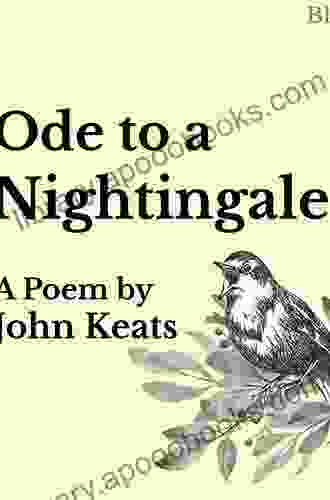Ode to a Nightingale: A Poetic Interrogation of Mortality and the Sublime


In the annals of English literature, John Keats' "Ode to a Nightingale" stands as a lyrical masterpiece that transcends the boundaries of time and space. Written in 1819, this poem has captivated readers with its haunting imagery, evocative language, and profound exploration of mortality and the sublime.
Ode to the Nightingale: An Overview
The poem begins with the speaker, overcome with despair and longing, seeking solace in the ethereal song of a nightingale. The nightingale's melody transports him to a realm of pure sensation and beauty, where he can temporarily forget his earthly sorrows.
4.3 out of 5
| Language | : | English |
| File size | : | 1983 KB |
| Text-to-Speech | : | Enabled |
| Screen Reader | : | Supported |
| Enhanced typesetting | : | Enabled |
| Print length | : | 302 pages |
However, the speaker's reverie is cut short by the realization of the nightingale's mortality and the fleeting nature of its song. This realization prompts a deep meditation on the human condition, the inevitability of death, and the search for meaning in the face of it.
Themes in "Ode to a Nightingale"
Mortality and the Sublime: "Ode to a Nightingale" is a profound meditation on the human experience of mortality. Keats juxtaposes the ephemeral beauty of the nightingale's song with the inevitability of death, creating a poignant contrast that highlights the fragility and brevity of life.
The Search for Meaning: In the face of mortality, the poem explores the human need for meaning and purpose. Keats suggests that beauty and art can provide solace and respite from the harsh realities of life, offering a temporary escape from the contemplation of death.
Ethereal beauty and Sensory Experience: The poem is renowned for its vivid imagery and evocative language, which create a sensory experience for the reader. Keats employs rich descriptions and metaphors to convey the ethereal beauty of the nightingale's song and the speaker's heightened state of perception.
Nature and the Sublime: "Ode to a Nightingale" celebrates the transformative power of nature and its ability to awaken within us a sense of the sublime. Keats' depiction of the nightingale's song and the surrounding natural world evokes a profound awe and reverence for the beauty and mystery of the universe.
Poetic Devices in "Ode to a Nightingale"
Imagery and Metaphor: Keats' masterful use of imagery and metaphor creates a vivid and evocative tapestry of language. He compares the nightingale's song to "a draught of vintage" and "beaded bubbles winking at the brim," evoking a sense of intoxication and sensory delight.
Personification: Keats personifies the nightingale, imbuing it with human qualities and emotions. The bird becomes a symbol of both mortality and the transformative power of beauty, guiding the speaker through a profound journey of introspection.
Structure and Form: The poem is written in terza rima, a complex and demanding verse form. This structure provides a sense of musicality and flow to the poem, enhancing its overall impact and memorability.
Critical Acclaim and Legacy
"Ode to a Nightingale" has received universal acclaim from critics and scholars alike. Its exploration of mortality, the sublime, and the power of beauty has resonated with readers for centuries. The poem has been anthologized in numerous literary collections and translated into countless languages, solidifying its status as a classic of English literature.
John Keats' "Ode to a Nightingale" is a lyrical masterpiece that transcends time and space. Its exploration of mortality, the sublime, and the search for meaning continues to resonate with readers today. Through its vivid imagery, evocative language, and profound insights, the poem offers a glimpse into the human experience and the enduring power of art and beauty. As Keats himself wrote, "A thing of beauty is a joy forever."
4.3 out of 5
| Language | : | English |
| File size | : | 1983 KB |
| Text-to-Speech | : | Enabled |
| Screen Reader | : | Supported |
| Enhanced typesetting | : | Enabled |
| Print length | : | 302 pages |
Do you want to contribute by writing guest posts on this blog?
Please contact us and send us a resume of previous articles that you have written.
 Book
Book Novel
Novel Page
Page Chapter
Chapter Text
Text Story
Story Genre
Genre Reader
Reader Library
Library Paperback
Paperback E-book
E-book Magazine
Magazine Newspaper
Newspaper Paragraph
Paragraph Sentence
Sentence Bookmark
Bookmark Shelf
Shelf Glossary
Glossary Bibliography
Bibliography Foreword
Foreword Preface
Preface Synopsis
Synopsis Annotation
Annotation Footnote
Footnote Manuscript
Manuscript Scroll
Scroll Codex
Codex Tome
Tome Bestseller
Bestseller Classics
Classics Library card
Library card Narrative
Narrative Biography
Biography Autobiography
Autobiography Memoir
Memoir Reference
Reference Encyclopedia
Encyclopedia John Morley
John Morley Matthieu Aikins
Matthieu Aikins Thomas Singer
Thomas Singer John Kruth
John Kruth John Davenport
John Davenport John Gregorek
John Gregorek Reader S Aid
Reader S Aid John Grisham
John Grisham John B Manbeck
John B Manbeck Joseph Harris
Joseph Harris Kristy Marie
Kristy Marie Lisa Genova
Lisa Genova Martin Hegel
Martin Hegel Wendela Whitcomb Marsh
Wendela Whitcomb Marsh Teresa Torres
Teresa Torres John F Clark
John F Clark The Great British Sewing Bee
The Great British Sewing Bee Marion Kummerow
Marion Kummerow Melissa Dickson
Melissa Dickson John Kennedy Toole
John Kennedy Toole
Light bulbAdvertise smarter! Our strategic ad space ensures maximum exposure. Reserve your spot today!

 Richard AdamsEnglish Poetry About Modern Day Japan: A Window into the Land of the Rising...
Richard AdamsEnglish Poetry About Modern Day Japan: A Window into the Land of the Rising...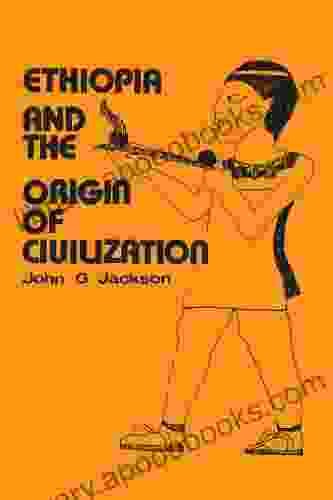
 Tony CarterUnlocking the Secrets of Civilization: Ethiopia and the Cradle of the Human...
Tony CarterUnlocking the Secrets of Civilization: Ethiopia and the Cradle of the Human...
 Scott ParkerHow to Know If He's Husband Material: The Ultimate Guide for Women Seeking a...
Scott ParkerHow to Know If He's Husband Material: The Ultimate Guide for Women Seeking a...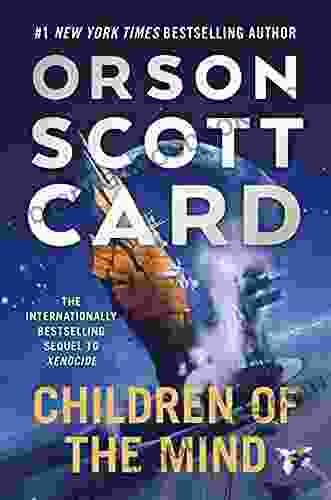
 Jeremy CookChildren of the Mind: Ender Quintet's Unforgettable Journey into the Depths...
Jeremy CookChildren of the Mind: Ender Quintet's Unforgettable Journey into the Depths... Albert CamusFollow ·13.2k
Albert CamusFollow ·13.2k Isaac BellFollow ·6.7k
Isaac BellFollow ·6.7k Ronald SimmonsFollow ·16.8k
Ronald SimmonsFollow ·16.8k Junot DíazFollow ·10.4k
Junot DíazFollow ·10.4k Mikhail BulgakovFollow ·5.9k
Mikhail BulgakovFollow ·5.9k Levi PowellFollow ·13.7k
Levi PowellFollow ·13.7k Dawson ReedFollow ·4k
Dawson ReedFollow ·4k Foster HayesFollow ·3.7k
Foster HayesFollow ·3.7k

 Tyler Nelson
Tyler NelsonHer Dragon to Slay: Embark on an Epic Journey of...
In a realm where shadows dance and legends...

 Zachary Cox
Zachary Cox101 Best Marine Invertebrates: The Adventurous Aquarist's...
Unveiling the Enchanting Realm...
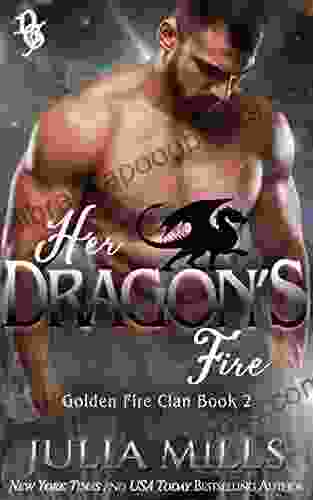
 William Wordsworth
William WordsworthHer Dragon Fire: Unleash the Power Within Your Soul
Embark on an...
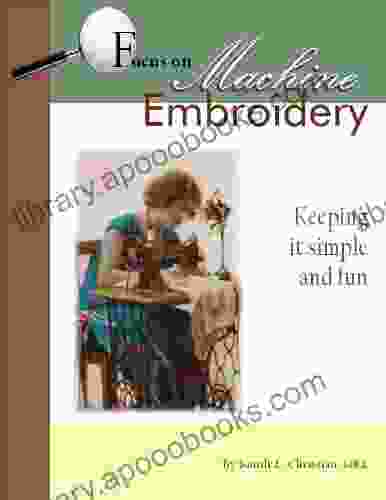
 William Powell
William PowellUnveiling the Enchanting World of Machine Embroidery with...
Embroidery, an ancient art form that has...
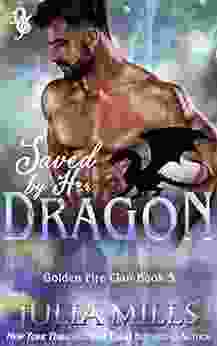
 Will Ward
Will WardGolden Fire Clan Dragon Guard: A Journey into a Realm of...
Prepare to be...

 Gustavo Cox
Gustavo CoxProject Ideas to Elevate Your Hobbies and Flourish Your...
<p>Welcome to the ultimate guide to...
4.3 out of 5
| Language | : | English |
| File size | : | 1983 KB |
| Text-to-Speech | : | Enabled |
| Screen Reader | : | Supported |
| Enhanced typesetting | : | Enabled |
| Print length | : | 302 pages |


